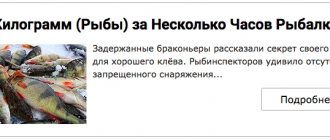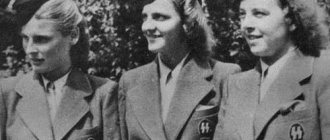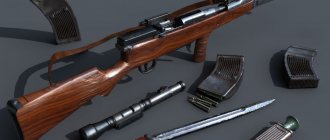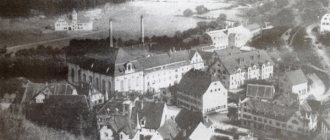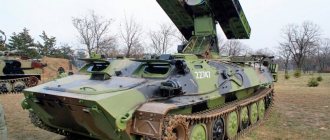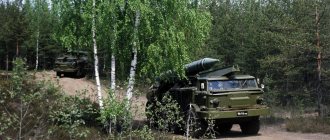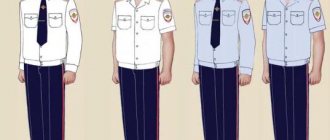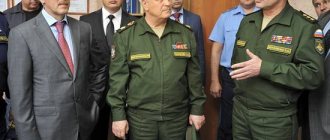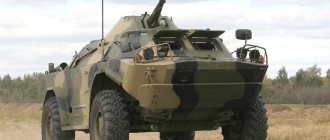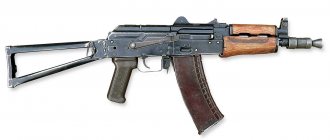This term has other meanings, see Officer (meanings).
Initial people (Heads) or
officers
of the Moscow Streletsky regiments.
Canes are visible. Officer of the infantry regiment from 1700 to 1732[1] Chief officer and staff officer of the Preobrazhensky Life Guards regiment from 1700 to 1732[2] Officer of the Semenovsky Life Guards regiment from 1700 to 1720 “Portrait of the Life Hussar Colonel Evgraf Vladimirovich Davydov" O. Kiprensky, 1812
Headquarters of the Supreme Commander-in-Chief, 1914, Quartermaster General, Lieutenant General Yu. F. Danilov and the ranks of his administration.
An officer
(German Offizier, through the Late Latin officiarius - official, from Latin officium - position) [3] - an official of law enforcement agencies: the armed forces, in some states the police (militia).
A person who specially prepared for military service - for example, received a special higher education. An officer can receive a military, special rank or class rank in accordance with his education, service experience and merit. He may be authorized to occupy a command position in the security forces of the state according to his rank and training profile.
Content
- 1. History
- 2 Officer in the Russian Armed Forces 2.1 Russian Tsardom
- 2.2 Imperial period
- 2.3 Soviet period 2.3.1 Red Army
- 2.3.2 Soviet Army and Navy
- 3.1 Russian Ministry of Internal Affairs
- 4.1 Officers on commission
Heroes of the Russian Federation
List of Marines - Heroes of the Russian Federation
- foreman Azarychev, Gennady Alekseevich (1995)
- Guard Lieutenant Colonel Belyavsky, Vladimir Anatolyevich (2006)
- Lieutenant Borovikov, Vladimir Valerievich[16] (1995, posthumously)
- captain Vdovkin, Viktor Viktorovich (1995)
- Guard Major Gaponenko, Pavel Nikolaevich[17] (1996, posthumously)
- captain Gushchin, Andrey Yurievich (1995)
- Guard Lieutenant Colonel Darkovich, Alexander Vasilievich[18] (1995)
- Ensign Dneprovsky, Andrey Vladimirovich[19] (1995, posthumously)
- senior warrant officer Zamyshlyak, Grigory Mikhailovich (1995)
- midshipman Zakharchuk, Andrey Nikolaevich (1995, posthumously)
- Major Karpushenko, Vladimir Valerievich[20] (2000)
- Lieutenant Colonel Klimenko, Dmitry Nikolaevich (2000)
- Guard Captain Kolesnikov, Evgeniy Nikolaevich[21] (1995, posthumously)
- Major General Kocheshkov, Evgeniy Nikolaevich (1995)
- Lieutenant Kuryagin, Yuri Gerasimovich[22] (2000, posthumously)
- Major General Otrakovsky, Alexander Ivanovich (2000, posthumously)
- guard captain Polkovnikov, Dmitry Alexandrovich[23] (1995)
- Sergeant Tatashvili, Vladimir Vladimirovich[24] (2000, posthumously)
- senior lieutenant Firsov, Sergei Alexandrovich[25] (1995, posthumously)
- Colonel Chernov, Alexander Vasilievich[26] (1996)
- Guard Captain Sheiko, Sergei Sergeevich[27] (1995)
- captain
History[ | ]
In the Middle Ages, there was subordination in the troops and regular armies, but this was almost not regulated by law. Since the time of recruiting troops, officers began to be distinguished as a separate military class. Thus, in Western Europe, officer ranks (positions and titles) appeared in the 1570s.
In the standing armies, a hierarchy of officer ranks appeared - colonels, captains, lieutenants. Each of them could more or less independently lead his subordinates in battle, and in peacetime train them in military affairs.
In different states and countries, officer positions were filled in different ways: a deputy was chosen from lower ranks or regiment recruiters, and officer patents were sold. Later, officers began to be appointed by royal decree. But regardless of the order of replacement, a new historical phenomenon arose: army commanders and chiefs began to form a separate community. In feudal states, officers were recruited from the nobility. They constituted a special closed caste.
A little history
1696 was not the year the fleet was born out of nowhere. The first information about the construction and combat use of deck ships dates back to the pre-Mongol period. In 1151, during the Great Reign of Izyaslav Mstislavovich, a combat rowing ship was built, with archers on the upper deck and oarsmen on the lower deck. Information about combat use and the names of crew members has not been preserved.
The main stages in the formation of the Russian fleet occurred during the reign of the Romanov-Holstein-Gottorp dynasty. The construction of the first three-masted ship was carried out in 1636 - during the reign of the first representative of the Romanov dynasty, Mikhail Fedorovich, and the complete decline and collapse of the Imperial Navy, its capture, sinking and withdrawal to foreign waters occurred during the reign of the last representative - Nicholas II by 1920.
During this period, the Russian fleet managed to take a leading position in the world in terms of the number of warships, but quickly lost them as a result of the incompetent policy of the authorities and command. The creator of the regular fleet, Peter I, in the year of his death, left a legacy of a fleet that ranked 5th in power in the world, inferior to Great Britain by 5 times (in the number of battleships), France and Turkey by 1.5 times, maintaining a parity of 1:1 with fleets of Sweden and Denmark. The peak of power was 1904, when Russia, in terms of the number and power of warships, took 3rd place, after England and Germany, but, as a result of a series of lost battles in the war with Japan, it lost a large number of ships and was relegated to 6th place.
The first mention of naval commanders and their ranks dates back to 1656. In the war with Sweden, the Russian rowing (galley) flotilla was commanded by governor Peter Potemkin. But already during the Second Azov Campaign of 1696, the first admiral , who was entrusted with commanding the light river fleet of the Cossacks allied to Moscow and the only ship captured from the Turks. He became a friend and teacher of Peter I - Franz Lefort, who never served in the navy and was born in landlocked Switzerland.
Officer in the Russian Armed Forces[ | ]
Russian kingdom[ | ]
The archers, who appeared in the 17th century, who made up the standing army of Russia, also had monotonous clothes (uniforms), first red with white berendeykas (bandages) [4], and then, under Mikhail Feodorovich, multi-colored. Initial people or persons in charge
had leather gloves and staves, which at that time generally served as a sign of power.
Officers first appeared in the Russian army in the 1630s. in the regiments of the new system, with the involvement (hiring) of foreign commanders (chiefs), in Rus' they were called initial people. After the Narva Confusion, Peter I focused on training national command personnel (officer corps). The officer corps began to be formed from representatives of the noble class. The difference between non-commissioned officers and other military personnel was the gold braid on the cuffs of their caftan and the brim of their hat. The same braid was used to trim the sides and pockets of caftans and camisoles for officers, who were also distinguished by gilded buttons, a white tie and, in full dress uniform, a white and red plume on the hat. While in formation, officers also wore a special metal badge, which was worn around the neck and was similar to the one preserved until 1917 in the former amusing regiments and bombardier company. Scarves worn over the shoulder served to distinguish headquarters from chief officers: the former had gold tassels, the latter silver. Powdered wigs were worn only by officers, and then only in full dress uniform.
...for a century and a half, officers in Russia were not only completely part of the noble class, but were also the most privileged part of this class. Officers as a professional group were socially superior to any other socio-professional group in the country. They had the most prestigious status in Russian society of that time. And it is hardly a coincidence that this particular period was marked by the most glorious victories of Russian weapons; it was during this time that Russia expanded its borders in Europe as far as possible (as they remained from then until the end of its existence), and it was at that time that it was the strongest power of the world, occupying a position in it that it has never occupied either in the past or in the future. The second half of the 18th and first half of the 19th centuries were truly the “golden age” of Russian statehood.
— S.V. Volkov. Russian officer corps.
Imperial period[ | ]
“The image of our life as officers after the accession to the throne of Emperor Paul completely changed,” recalled Count E. F. Komarovsky; - under Empress Catherine II, we only thought about going to society, theaters, wearing tailcoats, and now from morning to evening in the regimental yard; and taught us all like a recruit.”
Fearing a bad mark on the conduit and even, perhaps, exclusion from service for sloppiness, upon arrival at the regiment it would be necessary to sew a new uniform pair from the best cloth, buy or order a scarf, embroidered patches, epaulettes and lanyards - at least tinsel ones, a shako and sword - the same uniform as the other officers of his regiment. An officer also cannot do without a frock coat and a warm overcoat (with cotton wool) for the winter. You need some tableware, a bed, more shirts, you can’t do without towels, handkerchiefs... All this required money, more than an ensign’s annual salary, which at that time he received 450 rubles in banknotes... Many poor people for a long time, for several years, did not could get out of debt - either by borrowing from their regimental commander, or by begging their salary from the regimental treasurer in advance for a third of the year in order to pay off one extremely annoying creditor. “There is silk on the belly, and crack in the belly” - no one else knows the truth more than the infantry subaltern officer who supports himself with one salary.
— E. I. Topchiev, memoirs.
Officers in the Russian Armed Forces were divided into three categories:
- generals;
- staff officers (from German: Stabsoffizier) - senior officer ranks in the armed forces of the Russian Empire (Russian army and navy) until 1917, generally corresponding to classes VI-VIII of the Table of Ranks, that is, major, lieutenant colonel and colonel. Officers in these ranks formed the headquarters of the regiment in the 18th century, which determined their common name. Staff officers had the right to be addressed as “Your Honor”;
- chief officers - (from German Oberoffizier) - the name of the lowest category of officer ranks in the armed forces of the Russian Empire (Russian army and navy) until 1917, corresponding to classes IX-XIV of the Table of Ranks, from ensign/cornet to captain/captain.
There was also a narrower interpretation of the word “officer” - staff and chief officers (not generals)[5][6].
The main purpose of the officers was combat service, but often they filled positions that were exclusively administrative in nature.
Also were in the armed forces of the Russian Empire:
- Non-commissioned officer (from German Unteroffizier - junior officer) is a military rank and category of junior command and command personnel in the armed forces (AF) of different countries.
- General Staff officer - the rank of officer, in the last third of the 19th century - the beginning of the 20th century, as a rule, who received a higher military education at the Academy of the General Staff (who completed the full course of the Nikolaev Academy of the General Staff and were assigned to the General Staff (that is, who had the right to eventually receive a position according to the General Staff).
- A watch officer in the Russian Imperial Navy is an assistant to the watch commander.
In Russia, since the mid-19th century, the rights of personal nobility were given by the rank of second lieutenant, and hereditary ones by the rank of colonel.
“As time goes on, recruiting the officer corps becomes more and more difficult. With the opening of a large number of new paths for activity, energetic, educated and knowledgeable people are joining the army, along with people who have a calling for military service, also losers who were unlucky on other roads.”
— From the report to the Tsar by Minister of War A.N. Kuropatkin, March 14, 1900.
After the Japanese War, during the military reform of Nicholas II, in the period from 1905 to 1906, a simplified procedure for dismissal from military service into the reserve and retirement of elderly and other officers and generals inappropriate for their official purpose was introduced, according to decisions of various certification commissions. About 7,000 officers were dismissed, including 4,300 due to age or inadequacy of their duties. For officers transferred to the reserve and retirement, in May 1906, increased pensions were temporarily introduced, which made it possible to relieve social tension among the command and management personnel of the army, navy and other formations. On this basis, a new pension charter, prepared by the government of P. Stolypin, was published in 1912, providing retired officers with long service an acceptable life in retirement and reserve. Since 1909, the salaries of combat officers and generals have been significantly increased in the Russian Armed Forces.
In the Russian Empire in 1912, 53.6% of officers (in the infantry - 44.3%; in the cavalry - 100%[7]) came from nobles, 25.7% - from burghers and peasants, 13.6% - from honorary citizens, 3.6% from the clergy and 3.5% from merchants. However, during the Great War, the social composition of the Russian officer corps changed significantly.
One day, General Keller demanded an infantry battalion to guard his headquarters, located in Kimpolung. Our 409th regiment, which was in reserve, turned out to be subordinate to him. They sent the first battalion, at the head of which, after losing a large number of officers in battle, was me. I arrive at the cavalry corps location and report to the chief of staff. He looks at me in surprise, asks how old I am (I was 22 at the time), and goes into another room of the building. Keller comes out from there, a man of enormous stature, looks at me with a smile, then takes my head in his hands and booms: “Two more years of war, and all yesterday’s warrant officers will become our generals!”
— A. M. Vasilevsky, “The Work of a Whole Life”
During the war, after an accelerated course of training (3 months) or for bravery, about 220 thousand “wartime officers” were promoted to officers, including about 80 thousand from military schools and about 110 thousand from ensign schools[8] (at the beginning of the war, there were approximately 46 thousand officers in the armed forces of the Russian Empire). General N.N. Golovin testified that of the 1,000 warrant officers who went through advanced training schools under his command (7th Army), about 700 came from peasants, 260 from townspeople, workers and merchants, and 40 from nobles. By this time, the officer corps included almost all persons fit for military service who had education at a gymnasium, a real school and similar educational institutions. In addition, the officer corps included several tens of thousands of people with a lower level of education.
Among the officers, including in our regiment, there was some confusion. A significant part of the career officers, monarchist-minded and not wanting any revolution in the country at all, responded in August to the call of the new Supreme Commander-in-Chief, General L. G. Kornilov, and were officially sent to his disposal. Another part of the officers, especially those who joined the army during the war (primarily the most progressive in the 26th Corps of our front), gradually became closer to the masses of soldiers.
— A. M. Vasilevsky. "Life's work"
As L. D. Bronstein (Trotsky) writes in the Chapter Offensive, History of the Russian Revolution, volume 1, “General Brusilov very clearly described at the beginning of May, at a meeting at headquarters, the state of the command staff: 15% - 20% have adapted to the new order of conviction; some of the officers began to flirt with the soldiers and incite them against the command staff; the majority, about 75%, did not know how to adapt, became offended, hid in their shell and did not know what to do. The overwhelming majority of the officers were also worthless from a purely military point of view.”
By the end of 1917, approximately 320 thousand officers remained alive (including those who were in captivity, those who had not yet returned to duty due to injuries and those who had been dismissed). The revolution and civil war put an end to the existence of the officer corps of the Russian Empire. Most of the officers either died during the civil war and the Red Terror (up to 90 thousand), or ended up in exile (up to 100 thousand), or were shot or died in prisons and camps in the 1920-1930s, or went to serve in the Red Army .
On March 21, the very day when the elective beginning in the Red Army was canceled (by order of the Supreme Military Council of the RSFSR), the All-Russian Collegium appealed to military specialists, to all officers of the old army, with an appeal to join the Red Army for command positions.
— A. M. Vasilevsky. "Life's work"
Soviet period[ | ]
Red Army[ | ]
Main articles: Military specialist
and
Military categories and insignia of the Red Army 1918-1935
Commanders and soldiers of the Red Army, 1930 “Combat” - famous photograph by M. Alpert
On March 1, 1917, the Council of Workers' and Soldiers' Deputies issued Order No. 1 “On the democratization of the former army and navy,” which equalized civil rights for soldiers and officers, provided for the creation of soldiers' committees, allowed political activity in the troops, and abolished the titles of officers[9]. On December 16, 1917, the concept of “officer” was abolished[10][11]. Mentioned in the popular “March of Budyonny”, created no later than 1923, the “first red officer”[12] is probably an archaism of the old regime author.
In connection with the liquidation of estates, the word “officer” was replaced by the word “commander”; instead of military ranks, military job titles were used, for example, “div commander” (division commander), or “komkor” (corps commander). In 1924, “service categories” were introduced, from K-1 (lowest) to K-14 (highest), corresponding to the experience and qualifications of the commander. When addressing a commander whose position was unknown, one should name the position corresponding to the category, for example, “comrade of the regiment commander” for K-9. Triangles (for junior command personnel K 1 and 2), squares (for middle command personnel K 3-6), rectangles (for senior command personnel K 7-9) and rhombuses (for generals K-10 and above) were used as insignia. The types of troops differed in the color of their buttonholes; there were no shoulder straps.
On September 22, 1935, service categories were abolished and personal ranks were introduced. They were a mixture of job titles and traditional ranks, such as "divisional commander." Separate ranks were introduced for political workers (“brigade commissar”, “army commissar 2nd rank”), for technical services (“engineer 3rd rank”, “divisional engineer”), and for medical workers.
On May 7, 1940, the personal ranks of “general” and “admiral” were introduced, replacing the previous “divisional commander”, “commander” and others. On November 2, 1940, official ranks for junior command personnel were abolished and the rank of lieutenant colonel was introduced.
At the beginning of 1942, the ranks of technical and logistics services were brought into line with the traditional ones (“engineer major”, “engineer colonel”). On October 9, 1942, the system of political commissars was abolished along with special ranks. Job titles remained only for medical, veterinary and legal services.
At the beginning of 1943, the unification of the surviving official ranks took place. The word “officer” has returned to the official lexicon again for commanders and chiefs of middle and senior command staff (command staff), along with shoulder straps and the previous insignia.
- General Staff Officer
During the Great Patriotic War, military educational institutions and courses prepared:
- 1941 - over 233 thousand people;
- 1942 - 575 thousand people;
- 1943 - more than 402 thousand people;
- 1944 - 317 thousand people;
Total: more than 1.6 million people[9].
Soviet Army and Navy[ | ]
In the 1960s, in the Armed Forces of the USSR, due to the shortage of junior officers for primary positions (previously transferred to the reserve, during the “Khrushchev” reforms), courses for training junior lieutenants were created at military schools. Conscripts who had served for more than a year and regular conscripts were involved in the training at these courses, which lasted 10 months. Also, for graduates of these courses who received the rank of junior lieutenant, additional courses lasting three months were created, which were called “externship”, upon completion of which they were awarded the subsequent military rank of lieutenant[13][14].
Breastplate for persons who graduated from higher military educational institutions of the Armed Forces of the USSR - higher military schools and military institutes. Military personnel of the 56th separate air assault brigade, 40th army, a separate contingent of Soviet troops in Afghanistan. City of Gardez, 1987.
The Union Armed Forces also included:
- Errand officer
- Guidance Officer
- Guidance and Targeting Officer
- Liaison Officer
- Reserve officer
- Retired officer
In the USSR, officer comrade courts of honor existed until 1992.
Military personnel[ | ]
In accordance with Article 46 of the Federal Law “On Military Duty and Military Service,” military ranks (military and naval) are divided into the following compositions:
- Senior officers (Marshal of the Russian Federation, generals and admirals);
- Senior officers (military ranks from major to colonel inclusive, ship ranks, respectively, from captain 3rd rank to captain 1st rank);
- Junior officers (from junior lieutenant to captain, captain-lieutenant inclusive);
- Ensigns and midshipmen;
- Soldiers, sailors, sergeants and foremen.
In accordance with paragraph 1, article 2 of the Federal Law “On the Status of Military Personnel,” military personnel include officers serving under contract and conscription.
In modern Russia, anyone [15] who has reached a certain age, is fit for health, has received an appropriate education and meets certain requirements can become an officer. In a number of civilian universities there are military departments (faculties) at universities, the graduates of which are awarded the military rank of reserve officer (lieutenant). There are military universities. Graduates of such educational institutions are also awarded the rank of lieutenant.
Officers in the law enforcement agencies of Russia[ | ]
Legislatively, in law enforcement agencies where military service is not provided for, there is no concept of “officer”. In turn, the law “On Military Duty and Military Service” does not provide the concept of an officer as such. Its subject is legal regulation exclusively in the field of military duty and military service. From the law, in particular, we learn that in the armed forces and other formations where military service is provided, there are military ranks of officers, which in itself does not deny the existence of officers in other departments. The prefix “military,” according to the legislator, means that an officer’s rank may not be military. In fact, ranks from junior lieutenant and above (regardless of whether it was a military rank or a special one) were traditionally considered as officer ranks, which was reflected at the official level. So, for example, the Charter of the internal service of the Internal Affairs Directorate, approved by order of the Ministry of Internal Affairs of the USSR dated March 6, 1979 No. 80, contained the following provision: “During meetings, training sessions and other official gatherings of middle, senior and senior management personnel to salute direct superiors The command “Comrade officers” is given.”[16] This rule is strictly observed to this day; moreover, legally, the concept of “officer” for police officers did not exist in Soviet times.
Ministry of Internal Affairs of Russia[ | ]
Legislatively, the term “officer” is not used in the internal affairs system. There are positions of middle, senior and senior management, for which the assignment of special ranks is provided for those serving or retiring after serving. In the police, the category “commanding personnel” includes part of the employees, which, in military terminology, is the command staff and exclusively officers: commanders of platoons, companies, battalions, regiments (combat units of the PPS, DPS, formerly - OMON, SOBR). Currently, the activities of “officers’ meetings” have been revived in the internal affairs bodies, with the approval of relevant provisions at the official level.
IC of Russia[ | ]
De jure, they are not officers (except for military investigators). There are positions for which the assignment of special ranks is provided for those serving in public service in relevant positions in the investigative bodies and institutions of the Investigative Committee of the Russian Federation (except for the military). Those serving in the military investigative bodies of the Investigative Committee of Russia are officers and have military ranks from junior lieutenant to army general in accordance with the Federal Law of March 28, 1998 “On Military Duty and Military Service.”
State Fiscal Service of Russia[ | ]
There are positions of officer and senior field communications officer, although the employees themselves, with the exception of the director of the State Fiscal Service of Russia, are not military personnel and have special ranks of internal service.
Military Prosecutor's Office of Russia[ | ]
There are officer positions for those serving in military service in the bodies and organizations of the military prosecutor's office of Russia who have military ranks in accordance with the Federal Law of March 28, 1998 “On Military Duty and Military Service.”
Ministry of Emergency Situations of Russia[ | ]
There are positions for which special titles are awarded. There are officer positions for those undergoing military service or those in the reserve or retired after service. [ source not specified 949 days
] Military personnel of civil protection troops and paramilitary fire-fighting units with military ranks of junior, senior and senior command in accordance with the Federal Law of March 28, 1998 “On Military Duty and Military Service”) [
source not specified 949 days
]
FSB of Russia[ | ]
There are officer positions in accordance with the Federal Law of March 28, 1998 “On Military Duty and Military Service.”
FSO of Russia[ | ]
There are officer positions in accordance with the Federal Law of March 28, 1998 “On Military Duty and Military Service.”
SVR of Russia[ | ]
There are officer positions in accordance with the Federal Law of March 28, 1998 “On Military Duty and Military Service.”
Federal Service of the National Guard Troops of the Russian Federation (short name - Rosguard) [ | ]
Military ranks are provided in the troops of the National Guard of the Russian Federation (former internal troops of the Ministry of Internal Affairs of Russia), and special police ranks in units withdrawn from the Ministry of Internal Affairs of Russia (Decree of the President of the Russian Federation of 04/05/2016 No. 157), such as private security and departments (branches) licensed -permitting work. Before the transfer (in 2020) of employees to military service, special police ranks are held by OMON, SOBR and aviation officers.
Insignia
For headdresses of Russian Marine Corps personnel
- Navy cap badge for officers. (Currently cancelled).
- Navy cockade on the beret and hat with earflaps for officers. for warrant officers for a cap, beret, and earflap hat.
- Navy badge for caps, field caps for officers and warrant officers, as well as for all caps of conscripts. (Currently established for all categories of military personnel, for all types of headdresses).
- Eagle emblem on the beret.
By affiliation with the Navy
- (**) on the right sleeve
By affiliation with fleets
- (*) on the left sleeve
- (*) on the left sleeve
- (*) on the left sleeve
- (*) on the left sleeve
By belonging to the Marine Corps
- on the right sleeve with stripes (*) on the left sleeve with stripes (**)
- on the right sleeve with stripes (*) on the left sleeve with stripes (**)
By department affiliation
- 61st Separate Kirkenes Marine Brigade
- 810th Separate Marine Brigade
- 336th Separate Guards Bialystok Marine Brigade
- 1st Central Fleet Crew, Military Cargo Escort Battalion
Unofficial chest patches of Russian Marines
Manufactured using extra-budgetary funding. They are purchased by military personnel with their own money. The patches are truly popular and are used by all categories of military personnel from sailors to unit commanders.
- on the right side of the chest
- on the right side of the chest
Officers in English-speaking countries[ | ]
Officers of the Royal Armed Forces of Great Britain.
The category “officer” is understood somewhat differently in countries with an Anglo-Saxon legal system, for example in the USA, Great Britain and others. The meaning of the word “officer” is “employee/employee”, not necessarily military. In addition to the armed forces, police, paramilitary fire departments, customs and tax authorities, officers in these countries serve in commanding positions, for example in ambulance stations and in government agencies that control immigration. A distinction is made between commissioned officers and non-commissioned officers, depending on the availability of a state certificate of commission. In the US ground forces, among non-commissioned officers, one of the junior ranks is sergeant - with pay category E5. Any British police officer is a “police officer”, and the internal rank is determined by rank (examples of ranks: constable, sergeant, inspector). In the USA English police officer - "police officer" can be one of the lower ranks, along with "police detective", "police sergeant", "police lieutenant". As a rule, only officers on a commission have the right to command military units and other paramilitary formations[17].
Officers on commission[ | ]
They usually undergo training in the theory and practice of management, as well as in special subjects. In developed countries, as a rule, only university-educated officers receive commissions, although sometimes officers who began service without a commission (for example, during combat operations) also receive such promotions. University education is not compulsory for officers in the armed forces of Australia, Great Britain, Nepal, Pakistan (except the Air Force), Switzerland, Singapore, Israel and New Zealand. In the Israeli army, a university education is only required for promotion to senior officer ranks. In the Pakistan Army, officer training is equivalent to a bachelor's degree.
Officers without commission[ | ]
Receive limited command rights to small units upon promotion from the ranks. They usually receive some additional training, but usually their functions are limited to management in their specialty. Responsibilities in different countries may be different; in the USA and Great Britain this composition is considered the “backbone of the armed forces” [18].
In the navies of foreign countries, officers without a commission are often called petty officers or mats, and in other types of troops - sergeants and corporals. In countries where conscription service is accepted, including Russia, they are considered professional soldiers, not officers.
Warrant officers and midshipmen[ | ]
In a special group of officers without a commission, their senior ranks are often allocated, which are assigned under a special warrant. In the United States, this title may be given to a technical specialist, such as a helicopter pilot or information technology specialist.
Higher officer ranks
So, let's look at the composition of senior naval officers, photos of which can be seen above:
- The squadron of ships is commanded by a rear admiral. Replaces the flotilla commander. Shoulder straps with one large star.
- The deputy admiral and commander of the flotilla is the vice admiral. The shoulder straps have two horizontally located large stars.
- Admiral. Fleet commander. Shoulder straps with three large stars located longitudinally.
- The commander of the entire Russian Navy is the Admiral of the Fleet. Shoulder straps with four longitudinally located stars.
Notes[ | ]
- Ill. 186. // Historical description of clothing and weapons of Russian troops, with drawings, compiled by the highest order: in 30 volumes, in 60 books. / Ed. A. V. Viskovatova. - T. 2.
- Ill. 166. // Historical description of clothing and weapons of the Russian troops, with drawings, compiled by the highest order: in 30 volumes, in 60 books. / Ed. A. V. Viskovatova. - T. 2.
- Military encyclopedic dictionary. - M.: Military Publishing House, 1984.
- Uniform of troops // Encyclopedic Dictionary of Brockhaus and Efron: in 86 volumes (82 volumes and 4 additional). - St. Petersburg, 1890-1907.
- [[[s:TSD/Officer]] Dal V.I. Explanatory dictionary of the living Great Russian language. 2nd ed. SPb.-M., 1881.T.2.S.799.]
- Dictionary of the Russian language of the 18th century. St. Petersburg, 2011. Issue 18. P. 141-142.
- According to official rules, only hereditary nobles were admitted to 3 regular cavalry schools; even only hereditary nobles had the right to teach general education subjects at the school. Not a single cavalry regiment ever accepted into its midst a single officer, no matter how honored, if he was not a hereditary nobleman. See, for example, the History of the Elisavetgrad Cavalry School and the Sumy Hussar Regiment.
- Igor Ivanov
. Wartime officers in the Russian Army and Navy - ↑ 1 2 Edited by: V.A.
Zolotareva, V.V. Marushchenko, S.S. Avtyushina. In the Name of Russia: Russian State, Army and Military Education. - M.: Rus-RKB, 1999. - P. 336 + incl.. - ISBN 5-86273-020-6. - Decree on the equal rights of all military personnel dated December 16, 1917 // Decrees of Soviet Power. M., 1957.T.1.P.243.
- Explanatory dictionary of the Russian language. M., 1938.T.2.Stb.1020.
- Budyonny's March // Songbook of revolutionary, anti-religious, Komsomol and Ukrainian songs. M., 1923. P.26-27. (undefined)
. - Blagoveshchensk Tank School. History of the school
- Little-known facts from the history of the Baku Higher Educational Institution
- Tender for badges - Graduates of military universities are offered sergeant positions
- Order of the Ministry of Internal Affairs of the USSR dated 03/06/1979 “On approval of the charter of the internal service of internal affairs bodies”
- 10 USC § 101 (undefined)
. US Congress (January 5, 2009). Retrieved January 25, 2010. Archived June 2, 2012. - NCOs are 'backbone' of the Army (undefined)
. US Army Public Affairs Office, Fort Monmouth, NJ (April 15, 2009). Retrieved May 4, 2009. Archived June 2, 2012. - Max Booth “The Struggle for the Transformation of the Military Sphere” / “Russia in Global Affairs”
Why is a lieutenant general older than a major general?
Previously, ranks only denoted responsibilities that were assigned to commanders.
Major is translated from Latin as big, he commanded a battalion. Lieutenant , translated as assistant, he assisted the captain.
Now the generals. The highest rank was field marshal general, who was entitled to an assistant, that is, lieutenant. Therefore, the rank was lieutenant general.
In the Russian army there was the position of brigade commander, which included from 2 to 4 regiments. Well, such a large army should have been commanded by a major, namely a major general. But he was still younger than the general’s assistant.
Literature[ | ]
- Great Soviet Encyclopedia (GSE), Third edition, published by the publishing house "Soviet Encyclopedia" in 1969-1978 in 30 volumes.
- Officer // Military objects - Radio compass / [under general. ed. N.V. Ogarkova]. - M.: Military publishing house of the Ministry of Defense of the USSR, 1978. - (Soviet Military Encyclopedia: [in 8 volumes]; 1976-1980, vol. 6)..
- The Soviet Armed Forces are 60 years old (Accompanying text, part two), N. I. Kobrin, B. P. Frolov, M., Znanie Publishing House, 1978, 32 pp.
External links and literature
Marine Corps on the website of the Russian Ministry of Defense
Sabotage landings of the Marine Corps of the Northern Fleet in 1941–1944 // Saboteurs of the Second World War / ed.-comp. G. Pernavsky. - M.: "Yauza", "Eksmo", 2008. - P. 175–251. — 352 p. - (Military history collection). — 5000 copies. — ISBN 978-5-699-31043-2.
Feat of the Marine Corps: “Stand to the death!” - M.: "Yauza", "Eksmo", 2013. - 416 p. - (Stalin's special forces. Marines). — 2500 copies. — ISBN 978-5-699-62623-6.
